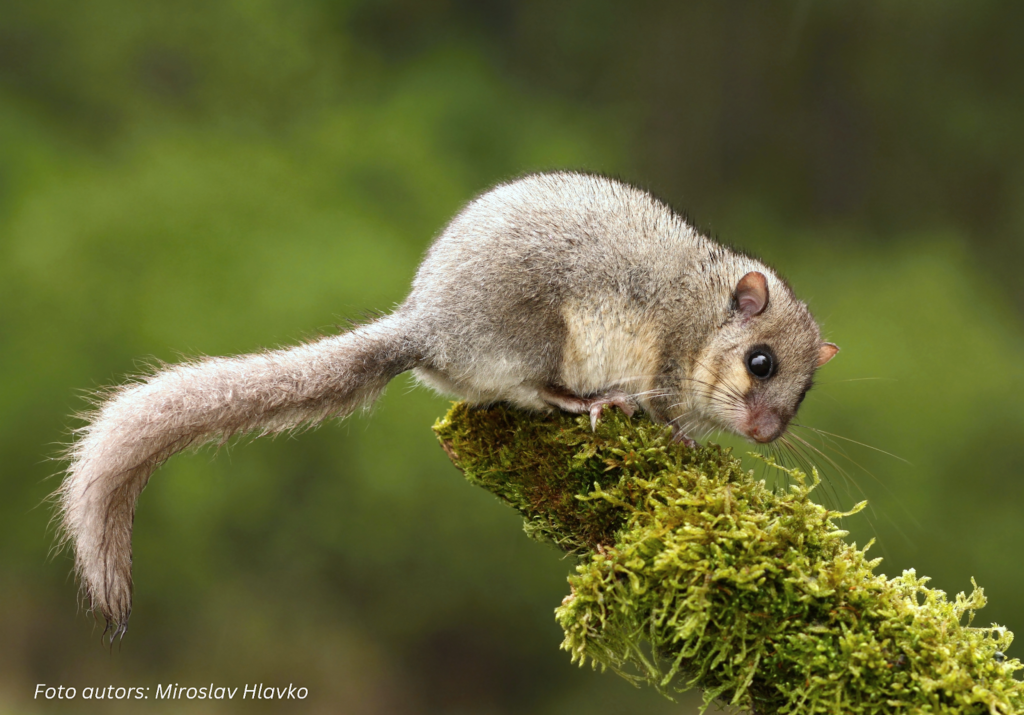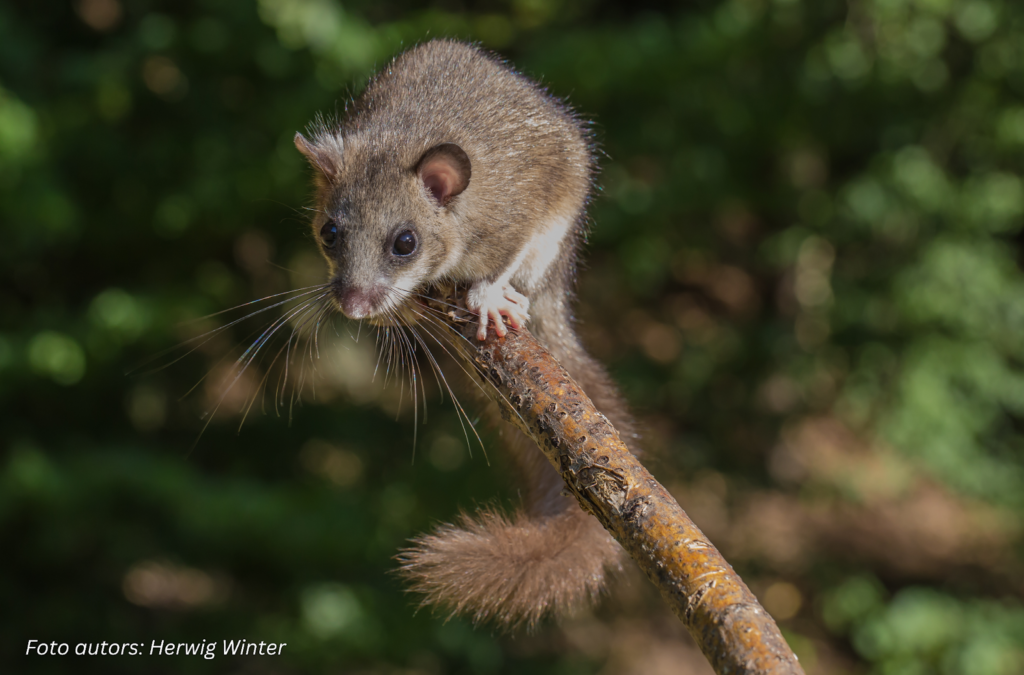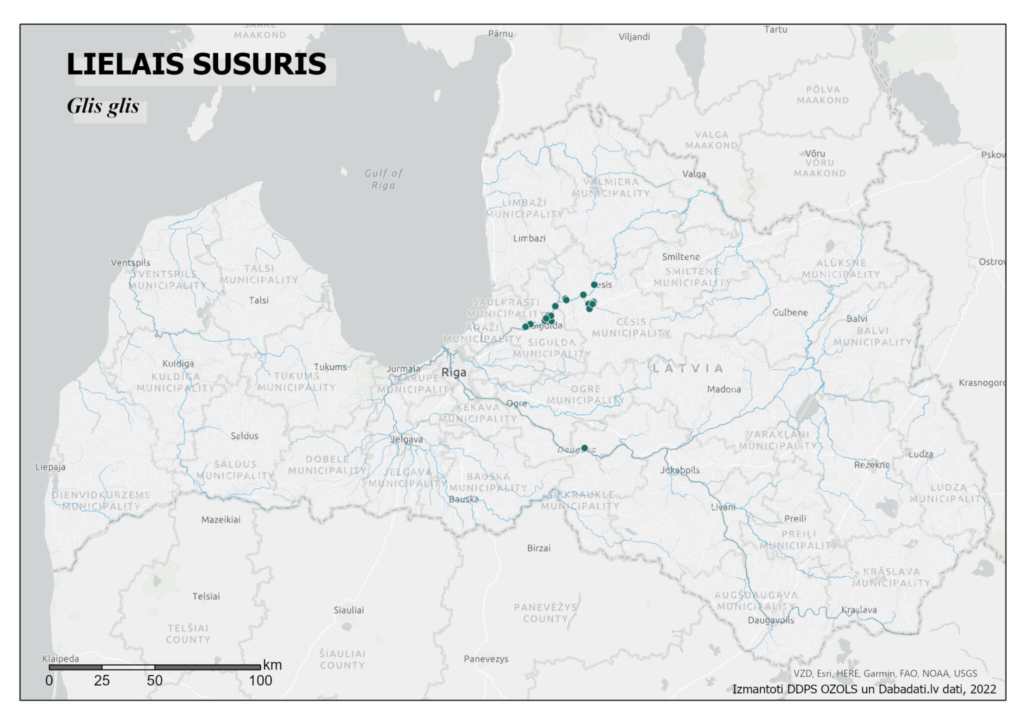Protected species of the month - fat dormouse
LIFE For Species social media followers have chosen the fat dormouse (Glis glis) as the protected species of the month. Thanks to everyone who voted!

During the month of December, the fat dormouse has gone into hibernation. It is the largest species of dormouse, and it can reach up to 18 cm in length. The animal weighs 100-150 grams, but when preparing for hibernation, the animal's weight can reach up to 200 grams. The upper side of the dormouse is monochromatic - gray or even silvery gray in young specimens, while the sides and underside are distinctly lighter, and white or yellowish-white in adults.

The animal feeds mainly on plant food. Most of the food includes seeds, berries, fruits of a wide variety of plants (mostly only their flesh is eaten, not the skin) and mushrooms. Significantly increased nutrition occurs when acorns and hazelnuts ripen. The fat dormouse lives in trees and is active only at night, except for the winter period, when it spends 7-8 months in hibernation. If there are any unfavorable conditions, such as insufficient food resources, the animal can spend a longer time in a sleeping state. The fat dormouse spends its winter sleep burrowing in the soil, but daytime hiding places are mostly found in tree hollows.

This species can hibernate both alone and together with other members of its species. Hibernation begins in October (adults hibernate earlier than young ones), but the awakening period begins around mid-May. Males wake up first, and in the spring the animals come out of the den having lost around 30-40% of their body weight.
The fat dormouse is threatened by logging, clear-cutting and the death of old oaks. The species is included in the Latvian list of specially protected species
